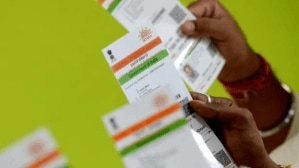As Bharti Airtel and Vodafone Idea are focussing on migration of subscribers from 2G to 4G, the launch of 4G feature phone by Jio could hurt the two telcos as they may lose 2G subscribers over time to the Reliance Industries-owned telecom operator, according to analysts.
Simply put, an Airtel or a Vodafone Idea user on the 2G network might move to Jio 4G network owing to the affordability of Jio Bharat phone at Rs 999. However, the same would not happen immediately, factors such as demand in the market, quality of Jio Bharat phone, users’ preference for Jio network, etc., will also be key factors that will shape the market going forward, analysts said.
“This (Jio Bharat phone launch) could be a potent risk to the current 2G base of Airtel/Vi/BSNL, which could accelerate the 2G to 4G transition and help incumbents take the hard call of shutting down 2G networks sooner. Moreover, the recent tariff increases in the 2G segment could be partially rolled back to arrest the churn,” said brokerage house Emkay Global.
“We believe JioBharat can again transition over 100 million subscribers if there are no supply chain or product-performance hiccups,” Emkay Global said.
As of March end, Airtel had 111 million 2G subscribers, whereas Vodafone Idea had 103 million. Currently, Airtel dominates the 2G market with a 54% subscriber market share. Further, the feature phone segment contributes 20% of mobile revenues for Bharti Airtel.
“Airtel is likely to see a higher impact of this move. Assuming its subscriber churn is inline with its current market share, Bharti may lose 11 million subscribers a year, which may impact its India/consolidated revenues by 1-2% and India/consolidated Ebitda by 1.5-2.5,” said brokerage house Jefferies in a note.
According to Jeferries, JioBharat phone would also put pressure on Vodafone Idea. For Vodafone Idea, feature phone segment contributes about 30% to the revenue, analysts said.
Apart from the affordable price of the phone, what also makes JioBharat attractive for feature phone users is the affordable monthly recharge rate of Rs 123. The plan, which offers 14 GB of data and unlimited voice, is 30% cheaper and gives 7 times more data compared to feature phone offerings of other operators, which is at Rs 179 per month, Jio said.
Apart from the internet browsing, the company has also introduced UPI payments with JioPay, and kept its entertainment apps like JioCinema and Jio Saavn in the phone.
“While we do not completely rule out potential increase in churn rate over time in the 2G user base of Airtel, we will wait and watch the success in beta trials of JioBharat phone,” said brokerage house Morgan Stanley in a report.
Morgan Stanley, however, believes that adoption of Jio feature phone could take time owing to break-even period of 15-16 months for users if they migrate to JioBharat phone from other feature phones.
Assuming a user has to invest an additional Rs 999 to buy a phone to migrate to the Jio network, the potential break-even period for that user could be 15-16 months (assuming saving of Rs 56/month vs other providers), the brokerage explained.
According to brokerage house JP Morgan, Jio can take market share at the lower end of the market with the JioBharat phone. “This also puts Bharti at risk as it can see increased churn from its recent 2G price action of increasing the Rs 99 plan to Rs 155 plan,” the brokerage said.
Apart from the churn of subscribers, Jio’s move is also hinting towards further delay in tariff hikes, which will also affect both Airtel and Vodafone Idea.
“Jio’s increased focus on grabbing new subscribers could also be perceived as further reducing the likelihood of any near-term tariff hike,” Citi said in a report.
JP Morgan said any hopes of a tariff hike should be diluted over the next 12-18 months as Jio is focusing on lower end of subscribers with attractive pricing.








